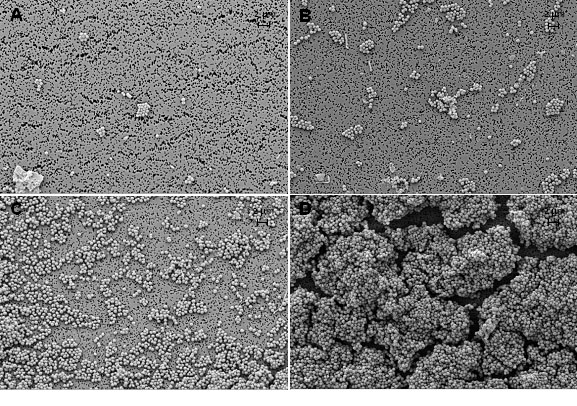Real World Interactions
Inactivation kinetics of multidrug resistant staphylococcus aureus using hydrogen peroxide vapour
 Scanning electron microscope images of S. aureus dried onto membrane filters All images used a 5 000 x magnification. Images contain a concentration of 105 (A), 106 (B), 107 (C) and 108 (D) cells of S. aureus on a membrane.
Scanning electron microscope images of S. aureus dried onto membrane filters All images used a 5 000 x magnification. Images contain a concentration of 105 (A), 106 (B), 107 (C) and 108 (D) cells of S. aureus on a membrane. Hydrogen peroxide vapour (HPV) is an efficient decontamination method used in hospitals. The assessment of decontamination procedures uses commercially available biological indicators, such as Geobacillus stearothermophilus spores. However the literature has shown that Staphylococcus aureus has the potential to be resistant to hydrogen peroxide based decontamination methods. The aim of this project is to evaluate the inactivation kinetics of S. aureus and G. stearothermophilus when exposed to HPV under controlled conditions and to relate this to decontamination cycles used in healthcare for HPV decontamination process optimisation.
Staff: D J Malik, J Morrissey (University of Leicester)
